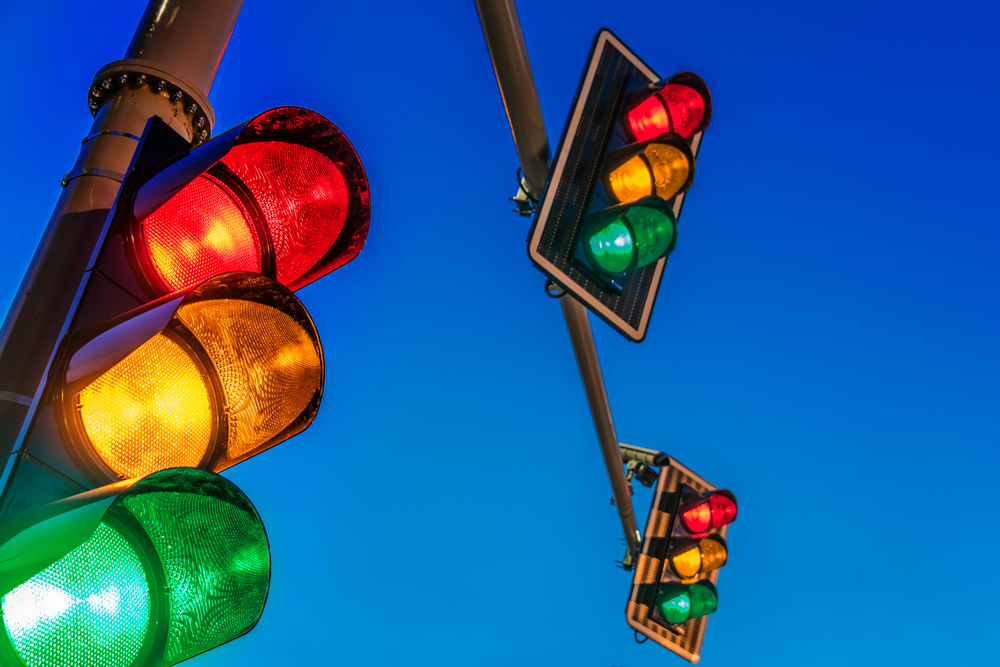
Imagine you approach an intersection, glance at the signal, and instead of just red, yellow, or green, you see a white light. It sounds futuristic, but transportation researchers are seriously proposing a fourth traffic signal to handle the growing mix of human drivers and autonomous vehicles (AVs). The aim? To smooth traffic flow, reduce delays, and give human drivers clearer instructions when AVs take partial control. It’s not science fiction—it’s a traffic upgrade being tested in simulations now. Understanding this change matters because it may reshape how we drive, how intersections work, and how we transition into a more automated driving era.
What This Fourth Color Would Actually Signal
The proposed light is often called a “white phase,” though the color isn’t rigid—what matters is its meaning. When enough autonomous vehicles approach an intersection, that light would turn on to tell human drivers to simply follow the car ahead. In effect, the AVs coordinate movement, and humans defer to them during that phase. Otherwise, intersections revert to normal red-yellow-green operation. Researchers believe this signaling lets AVs “lead the flow” and reduce turbulence between human-driven and automated traffic.
Why Researchers Think It Could Improve Traffic
Simulations suggest that even with modest AV adoption, introducing a white phase can reduce congestion and delays. At just 10 % AV penetration, delays dropped about 3 percent; at 30 %, they dropped more than 10.7%. Because AVs can communicate with traffic signals and each other, they’re able to execute smoother, coordinated flow through intersections. That reduces stop-and-go stops and wasted waiting times. Moreover, fuel consumption and emissions tend to decline when traffic moves more fluidly. Even for pedestrians, modeling shows wait times improve under mixed traffic with a white phase.
How It Affects Human Drivers—and Their Behavior
For human drivers, the fourth light simplifies decision-making in complex mixed traffic settings. When the white light appears, a driver doesn’t need to judge gaps or race forward—they just follow the car ahead. That removes hesitation or confusion in intersections crowded with AVs. If too many human-driven vehicles are present without AVs, the system automatically reverts to traditional signals. The clear instruction reduces the unpredictability humans often feel when sharing roads with automated systems.
Challenges & Roadblocks Before You See It
Adding a new traffic light color isn’t as simple as swapping bulbs—there are regulatory, technical, and infrastructure challenges. Hundreds of thousands of U.S. traffic signals would need hardware or software upgrades to support a white phase. Drivers must be educated, and the symbol must be universally understood before rollout. The mixed environment—human drivers and AVs—requires fallback logic when adoption is low. Researchers acknowledge that real-world pilots (ports or controlled intersections) are necessary to test before wide deployment.
Where It Could Debut—and What To Expect
The most likely initial testing grounds include ports, industrial zones, or high-automation corridors. In those areas, the percentage of commercial AVs is expected to rise faster. States already experimenting with intelligent infrastructure might adopt the white phase first. The signal could also be tinted or colored differently (not strictly “white”) as long as it’s clear and standardized. Within those pilot zones, drivers might see signage and alerts before full integration. Once success is demonstrated, the change could expand outward.
What the Fourth Light Says About the Future of Driving
This proposed fourth traffic light is more than a technical tweak—it’s a symbol of the evolving relationship between humans and machines on the road. As AVs proliferate, our road systems must adapt to new communication modes and hybrid traffic. The shift hints that “driving” will become more collaborative: humans and vehicles operating in tandem. It also suggests that trust and clarity will be essential in guiding driver behavior in new systems. When the day comes that you see a white traffic light, don’t be startled. It’s not a mistake; it’s the future signaling itself.
Would you trust a “white light” phase at intersections—and would it change how you drive? Share your thoughts and concerns below!
What to Read Next
- 8 Traffic Incidents Caused by Malfunctioning Smart Traffic Systems
- Top 5 Worst Cars to Drive in California Traffic
- 5 Worst Traffic Violations You Can Get
- Should Traffic Tickets Be Income-Based?
- 3 Cars Experts Say Could Skyrocket in Value Soon
The post A Fourth Traffic Light Color May Soon Appear in America—And It’ll Change Driving Forever appeared first on Clever Dude Personal Finance & Money.







